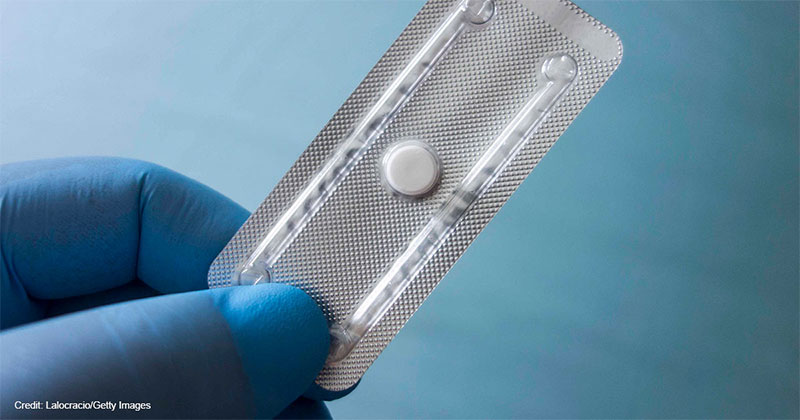
When the U.S. Food and Drug Administration (FDA) approved the chemical abortion drug, mifepristone, without adequately studying the drug’s safety, physicians from across the country filed a petition challenging the decision. For over 6,000 days, the FDA failed to answer. Following Dobbs, the FDA finally responded dismissing the doctors’ safety concerns, and so the Alliance for Hippocratic Medicine filed a lawsuit seeking to reverse FDA approval for mifepristone.
After a district court decision that the FDA illegally fast-tracked the approval of mifepristone, the Biden administration appealed, and the Fifth Circuit issued a ruling partially affirming the district court decision. The Fifth Circuit rule prohibited the distribution of mifepristone through the mail, protected women and unborn babies after seven weeks gestation from the chemical abortion drug, and reinstated in-person visits with a physician who can detect contraindications and follow-up to assess complications after the drug has been taken.
The Biden administration appealed to the U.S. Supreme Court, and on Wednesday, SCOTUS will review whether the Fifth Circuit decision to restore critical safeguards to the distribution of mifepristone will remain in effect as the case makes its way through legal proceedings.
As the lawsuit unfolds, the pro-abortion industry is perpetuating a number of myths as to why the Fifth Circuit decision should not go into effect. Here are the facts:
1. Myth: The majority of women who take chemical abortion drugs do not experience serious complications.
Between 2000 and 2021, 4,207 adverse events related to chemical abortions were reported to the FDA. It may be tempting to think 4,207 isn’t many, BUT this number only includes those voluntarily reported, as in 2016 the FDA removed the requirement for prescribers to report non-fatal adverse events.
Moreover, the way “serious complication” is defined matters. The New York Times, for example, classified needing a procedure after a chemical abortion or heading to the ER as merely moderate complications. The FDA, on the other hand, classifies all complications that require intervention to prevent permanent damage as “serious.”
But, while the FDA argues that complications they stated do not need to be reported do not exist, and the NYT has defined “serious complication” to exclude what many would consider “serious,” there is data that indicates mifepristone is dangerous for women.
In fact, the NYT’s own reporting shows that after taking chemical abortion drugs, three to five percent of patients need an additional procedure to remove remaining tissue or terminate the pregnancy. Three to five percent is one in 20 to one in 33 women. That’s a lot.
There’s state level data on chemical abortion, too.
While most states do not require abortion complication data to be broken down based on abortion type, Arkansas passed legislation in 2019 requiring this breakdown. The 2020 data shows that 88.9% of abortion complications in Arkansas are the result of chemical abortions.
These drugs are dangerous to both women and their children.
2. Myth: Mifepristone can legally and safely be distributed through the mail.
Longstanding federal law prohibits the mailing of any “article, instrument, substance, drug, medicine, or thing which is advertised or described in a manner calculated to lead another to use or apply it for producing abortion.”
That’s about as clear as a law can be.
Furthermore, sending mifepristone through the mail increases the likelihood of complications from ectopic pregnancy and Rh incompatibility.
Ectopic pregnancies, which occur in 2% of pregnancies but account for 13% of all maternal deaths, cannot be ruled out without an ultrasound. Half of women with ectopic pregnancies have no risk factors, and ectopic pregnancies that go undiagnosed may rupture leading to life-threatening hemorrhage. A woman is more likely to die from a ruptured ectopic while undergoing chemical abortion as she may assume that pain and bleeding is a sign the medication is working, rather than a warning sign that her life is in danger. Receiving these pills through the mail increases the chance that a woman’s ectopic pregnancy goes undiagnosed.
Additionally, Rh negative pregnant women who do not receive prophylactic Rhogam and undergo a chemical abortion may experience isoimmunization, when their immune system attacks future pregnancies. When left untreated, 14% of affected infants are stillborn, and half suffer neonatal death or brain injury. While an in-person visit would easily detect if a woman is Rh negative, sending pills through the mail prevents this.
Finally, there is a great potential for drugs sent through the mail to be misused because there is no way to verify who is consuming the medication, and whether they are doing so willingly. This will benefit sex traffickers, incestuous abusers, coercive boyfriends, etc. but not women who desire their pregnancies, but who are tricked or coerced into taking these pills.
3. Myth: The gestational age at which a woman has a chemical abortion doesn’t matter.
While women who use chemical abortion prior to eight weeks gestation have incomplete abortions about 5% of the time, by 10 weeks gestation, incomplete abortions occurs up to 10% of the time. The further along in gestation a woman is, the more likely she will have an incomplete abortion requiring surgery.
Furthermore, what makes chemical abortions uniquely traumatic is that a mother sees and must personally dispose of the remains of her aborted child, who may be visibly recognizable as a baby.
Planned Parenthood advertises using chemical abortions up to 11 weeks — at which point the baby already has a head, hands, feet, fingers, and toes. At eight to 10 weeks gestation, the baby is approximately the size and shape of a gummy bear. It’s hard to put into context the damage caused to a mother who expected to see a clump of cells and instead sees her visibly recognizable unborn child delivered dead into the toilet.
We must pray that the Fifth Circuit ruling reinstating some of the safeguards for women stays in place while Alliance for Hippocratic Medicine vs. the FDA proceeds through the courts, and ultimately, we must pray that the courts rule to repeal the approval of mifepristone and truly keep women and their unborn children safe from this drug.
------------------------------
Mary Szoch is the Director of the Center for Human Dignity at Family Research Council.

















